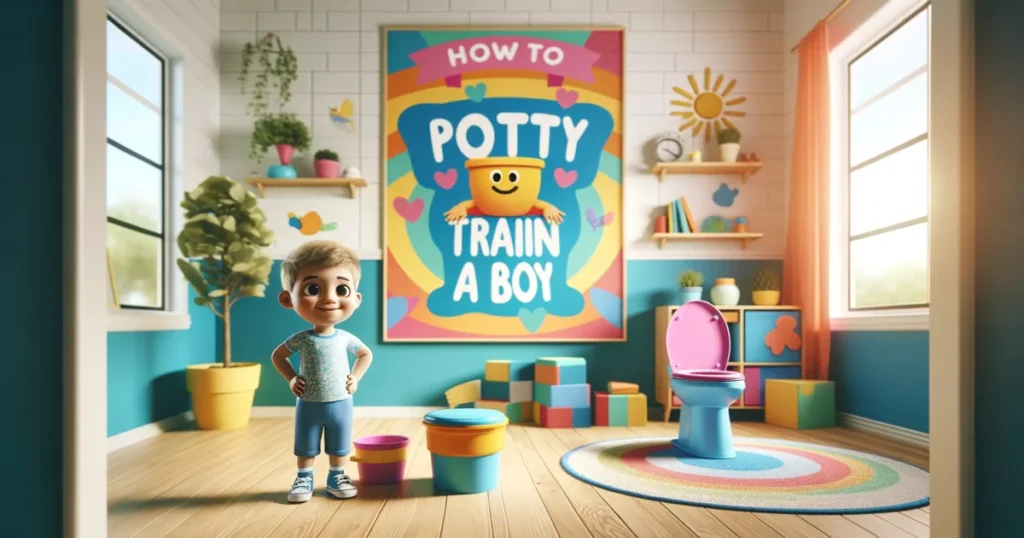Introduction of Early Childhood Early Intervention:
Imagine your child’s life as a beautiful garden. Just like flowers need the right soil, water, and sunlight to bloom, our little ones need love, care, and a little help sometimes to grow up healthy and strong. This is what “Early Childhood Early Intervention” is all about. It’s like being the best gardener for your child, ensuring they have everything they need to grow up happy and smart.

I’m here to share some simple secrets, the kind that anyone can use, within the realm of Early Childhood Early Intervention, to help every child shine bright.
Watching Them Grow:
Cheering on each new milestone in your child’s life is a joy every parent knows. It’s like being the first to spot a new bud in the garden. When your child flashes that first gummy smile or babbles their first ‘mama’ or ‘dada,’ it’s not just adorable—it’s a sign they’re learning and growing just as they should. So, keep an eye out for these precious moments. They’re the clues that show us we’re on the right path in the journey of Early Childhood Early Intervention.
Tip: Craft a cheerful, hand-made growth chart and place it on the fridge. Every time your child reaches a new stage, like taking their first step or saying a new word, celebrate by adding a bright sticker or a little note. It’s a great way to keep track and a fun walk down memory lane later on.
Playing and Learning:
Now, think of your home as the world’s best learning center. Filled with giggles and the pitter-patter of tiny feet, it’s where the magic of Early Childhood Early Intervention truly happens. Through games and play, children grasp the basics of language, learn the give-and-take of playing with others, and start to stretch their imagination.
Tip: Curate a ‘treasure chest’ of toys, puzzles, and books, and rotate the items weekly. This way, your little explorer always has something new to discover, keeping their mind engaged and their curiosity piqued.
Eating Colors:
Just like a painter uses a palette to create a masterpiece, using a variety of colors on your child’s plate can create a nutritious and fun meal that supports their growth. Each color represents a different nutrient, playing a vital role in Early Childhood Early Intervention by building a strong and healthy body.
Tip: Assemble a vibrant array of fruits and veggies to craft a rainbow on their plate. As you both enjoy the colorful spread, tell tales about ‘orange’ courageous carrots or ‘red’ adventurous apples, making mealtime both educational and a feast for the senses.
The Magic of Stories:
Every storybook is a treasure trove of adventures waiting to unfold. As you read with your child, you’re not just turning pages; you’re opening doors to new worlds, sparking imagination, and planting the seeds of lifelong love for reading—a cornerstone of Early Childhood Early Intervention.
Tip: Create a cozy reading nook and fill it with books that have large, colorful illustrations. Make reading an interactive adventure by letting your child lead the storytelling sometimes, turning the pages, and asking them what they think will happen next.
Good Habits for Early Childhood Early Intervention:
Good manners and kindness shine like sunlight in a child’s life. When they learn to share and express gratitude, they’re not just being polite—they’re building the social skills that will help them make friends and be considerate of others.
Tip: Applaud their good behavior with excitement—maybe with a sticker chart or a happy song. These positive reinforcements make Early Childhood Early Intervention a joyful process for everyone involved.
Understanding Feelings:
Talking about emotions is like giving your child a map to their own heart. It’s how they learn to understand what they’re feeling and how to express it, which is so important in Early Childhood Early Intervention. This emotional literacy is key to helping them navigate the world around them.
Tip: Use Storytime to discuss the characters’ feelings, or play a game of ’emotion charades’ using facial expressions. It’s a fun way to explore emotions and what they mean.
You’re Part of the Team:
Remember, in the story of your child’s growth, you’re not just a spectator; you’re a leading player. Your involvement is the secret sauce in Early Childhood Early Intervention, enhancing their learning and reinforcing their confidence.
Tip: Find joy in the small moments. Count the steps together as you climb stairs, or name the colors of clothes while folding laundry. These simple activities are the threads that weave a strong educational foundation.
Finding Helpers for Early Childhood Early Intervention:
There are times when we all need a guiding hand, and Early Childhood Early Intervention is no exception. Whether it’s a teacher, a pediatrician, or a friendly neighbor, these helpers can offer support and advice to foster your child’s development.
Tip: Don’t hesitate to reach out to your community’s resources, be it a playgroup, a local library’s story hour, or online forums. There’s a whole world of support waiting to be tapped into.
Same Things, Same Time:
A routine is like a gentle rhythm that brings harmony to a child’s life. Regular schedules provide a comforting predictability that is especially beneficial in Early Childhood Early Intervention. Knowing what comes next gives them security and a framework for the day.
Tip: Craft a visual schedule with simple pictures representing daily activities. This picture plan will help your child understand the flow of the day, from wake-up cuddles to bedtime stories.
Little Steps, Big Journeys:
Every small action, every day-to-day interaction with your child, is a precious step on an incredible journey. Singing a lullaby, counting peas on a plate, or sorting socks by color—all these are fun and stealthy ways of teaching. They’re the essence of Early Childhood Early Intervention, turning the mundane into the extraordinary.
Tip: Infuse learning into daily chores by making them into games. Matching socks can become a color game, and setting the table can be a lesson in counting. With a little creativity, learning becomes as natural as playing.

Table: Simple Steps for Big Smiles in Early Childhood Early Intervention
| Age | What to Look For | Fun Ways to Help Them Grow with Early Childhood Early Intervention |
|---|---|---|
| 0-6 months | Baby smiles and makes sounds | Sing and chat with your baby every day |
| 6-12 months | Baby sits up and starts to crawl | Play peek-a-boo and give them soft toys |
| 1-2 years | Baby says their first words | Read storybooks with big pictures |
| 2-3 years | Baby plays with others and runs | Set up playdates and run races together |
Remember, every child grows in their own special way, just like flowers bloom at different times. Use this table as a friendly guide for fun activities, not as a strict rulebook. Enjoy every moment with your little one and cherish the unique path of their development through Early Childhood Early Intervention.
Facts and Figures:
- Imagine giving your child a head start in the most important race of all — life. Early Childhood Early Intervention does just that, like a trusty pair of sneakers that fit just right, it helps little ones sprint ahead in their learning journey. Studies show that early assistance can boost learning abilities, making future schooling as smooth as a gentle breeze.
- It’s been said that words are the wings that carry our thoughts — and for children under two, these wings develop through hearing and speaking. Chatting and reading to them isn’t just bonding time; it’s like planting a garden of words that will blossom into strong reading and language skills, helping them stand tall in any academic field they wander into later on.
- Routines in a home are like the heartbeat of a drum, steady and reassuring. When families establish happy routines, they’re setting the rhythm for a calm and content household. It’s not just about structure; it’s about creating a dance of daily life that makes everyone feel secure and ready to tackle the day, a fundamental principle of Early Childhood Early Intervention.
FAQs for Early Childhood Early Intervention:
Q: What’s the scoop on “early intervention”?
A: Think of Early Childhood Early Intervention as your gardening tools. You use them to help your child’s growth in the best way possible, starting from when they’re really little. It’s all about giving them the support they need to be their happiest, healthiest selves.
Q: How can I tell if my little sprout might need some extra nurturing?
A: Keep an eye on how your little one is doing compared to other kiddos their age. If you notice they’re struggling to do the same things, it might be a sign they need a bit more help. That’s when you might want to chat with someone like a doctor or a teacher who can give you the lowdown on what to do next.
Q: Alright, I’m on board. But where do I go to dig up this kind of help?
A: There are lots of places to find support for Early Childhood Early Intervention. Your first stops might be your child’s school or your family doctor. They can point you in the right direction. And don’t forget about other moms and dads—they’re a treasure trove of info and can share what’s worked for their little ones.

Final Words on Early Childhood Early Intervention:
So there we have it, friends—simple ways to help our kids blossom. It’s all about being there, doing little things every day, and remembering that every child is unique and wonderful. Let’s use these tips to make sure our little ones have all they need to grow up into beautiful flowers in the garden of life.
Important Points:
- Keep an eye on your child’s new skills, and celebrate them.
- Make home a place of fun and learning.
- Brightly colored foods are healthy and fun.
- Stories and books plant seeds of knowledge.
- Good manners are like sunshine for friendships.
- Talking about feelings builds understanding.
- Being involved is the best support.
- There are people and places to help if you need it.
- Routines are cozy and comforting.
- Everyday fun is the secret to learning.
Want to learn more about Early Childhood Early Intervention? Click here to read our easy tips on our blog!


